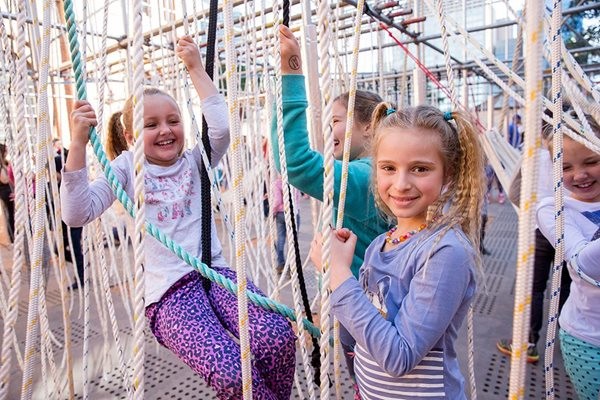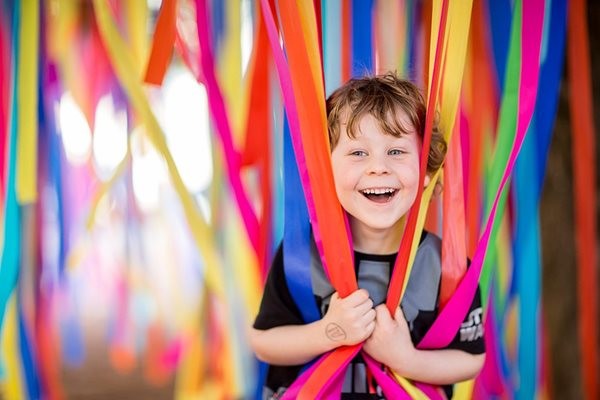Australian design firm, HASSELL, has found fresh inspiration for future cities design in the purest form – a child’s imagination.
A collaborative effort between HASSELL, Sydney Living Museums and not-for-profit organisation Archikidz, project PLAY[ground] aimed to create a space that would inspire tomorrow’s thinkers and city makers to play, experiment and toy with ideas about the future shape of our cities.
Over three days HASSELL and Archikidz, with the help of a 100 volunteers, transformed Sydney’s Hyde Park into a destination for spontaneous, uninhibited play.
As a free, ticketed event PLAY[ground] reached capacity before the gates even opened. Six thousand people – including 4,000 children – attended over the course of the three-day installation that was part of the 2015 Vivid Sydney Festival.

“Playability is an important consideration for our urban environments as it brings life into our city spaces, and encourages people to linger, explore and most importantly, smile,” says HASSELL Principal Jon Hazelwood.
“Play brings joy, it helps people feel connected, included and excited by the cities they live in. The projects undertaken by Archikidz are important because they allow the next generations to present fresh perspectives on how we can make our cities better for everyone who lives there – young and old.”
Initially, the Archikidz brief called for a single playground, but after testing early plans with a group of children, HASSELL instead created a collection of interactive installations to inspire different types of outdoor play.
The final installation saw kids diving into multi-coloured ball pits, shimmying up ropes, running through the maze of plants and exploring a forest of multi-coloured ribbons made from old parachutes.
Retired sailing spinnakers and timber palettes were given new life as platforms for kids to swing on, climb through, crawl under and jump off.

At the end of it all, the materials used were repurposed, returned or recycled – accomplishing the ultimate low cost, low impact event at the heritage-listed barracks.
The program for PLAY[ground] included a number of free workshops about city-making and the built environment. Kids with their families and friends immersed themselves in green wall workshops, drew their visions for the future city, and experimented with new ways of travelling through the city with parkour lessons.
Through PLAY[ground], HASSELL and Archikidz were able to successfully explore what happens when a child’s vision of play is inserted into the adult world. Ideas were explored with kids throughout the design processes and their responses to the final outcome recorded.
While there were plenty of suggestions for jet packs and robots, many kids referenced the importance of green space and new types of environmentally-friendly transport they would like to see ‘when they grow up’.
HASSELL will be using these insights to inspire new strategies for public engagement and inform future public realm projects.
Images: James Horan, Vin Rathod, HASSELL

